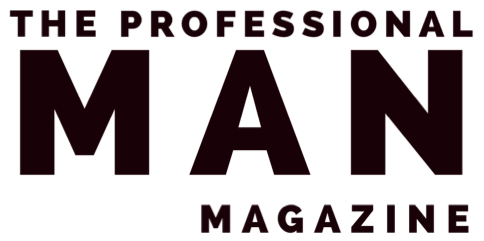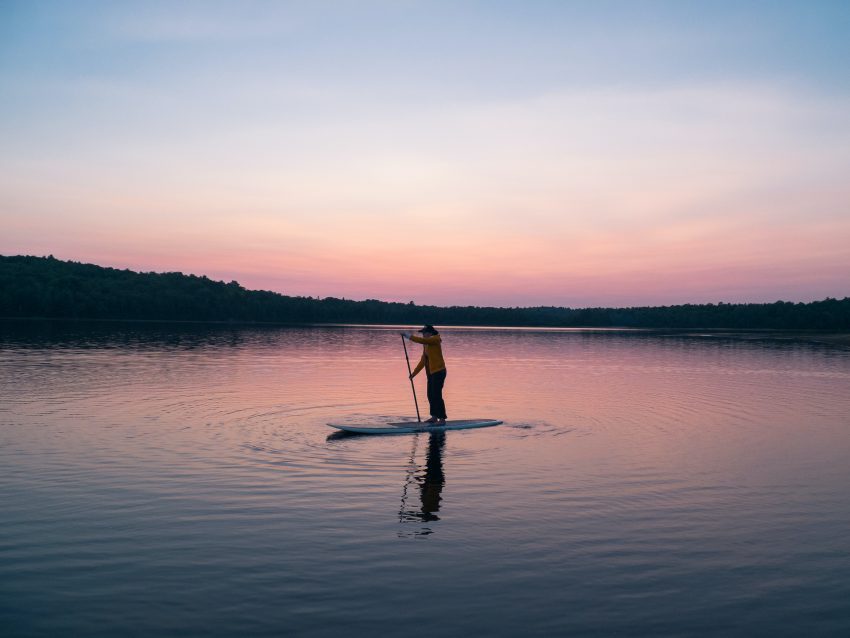Are you looking for a unique and exhilarating way to connect with nature while getting a full-body workout? Look no further than paddle boarding, the fastest-growing water sport that combines tranquillity and excitement. In this article, we will explore the numerous benefits of paddle boarding, provide you with essential tips to get started, guide you on the equipment you need, introduce you to fantastic paddle boarding destinations, and direct you to additional resources to fuel your paddle boarding passion.
The Health and Wellness Benefits of Paddle Boarding
Paddle boarding offers a plethora of physical and mental benefits. It provides a fantastic full-body workout, from strengthening your core muscles and improving balance to enhancing cardiovascular fitness. Additionally, the peacefulness of being surrounded by nature on the water promotes relaxation and stress reduction. Discover how paddle boarding can boost your overall well-being.
Paddle boarding is a fun and thrilling water sport and a fantastic way to improve your overall health and well-being. Let’s dive deeper into the myriad of health benefits you can expect to enjoy when you embark on a paddle-boarding adventure:
Full-Body Workout
Paddle boarding engages multiple muscle groups, providing a great full-body workout. Your core muscles are constantly activated to maintain stability as you balance on the board and paddle through the water. Additionally, the repetitive paddling motion works your arms, shoulders, and back muscles, helping to build strength and tone your upper body. Your legs also come into play as they work to stabilize you on the board, contributing to improved lower body strength.
Cardiovascular Fitness
Paddle boarding is an excellent cardiovascular exercise that gets your heart pumping. The continuous paddling action increases your heart rate, elevating your cardiovascular endurance over time. This low-impact activity helps improve circulation, lower blood pressure, and boost cardiovascular health.
Balance and Core Strength
Paddle boarding requires a strong sense of balance as you navigate the shifting surface of the water. You develop core strength and enhance your balance skills by constantly adjusting your body position to maintain stability. Over time, this translates to improved posture, better stability in other physical activities, and reduced risk of injuries.
Stress Reduction and Mental Well-being
One of the most remarkable aspects of paddle boarding is its ability to provide peace and serenity. Gliding across the water, surrounded by nature’s beauty, creates a calming and meditative experience. The rhythmic paddling motion combined with the sounds of nature promotes relaxation, reduces stress levels, and helps clear the mind. This escape from the demands of daily life allows you to recharge mentally and find inner balance.
Low-Impact Exercise
Unlike many high-impact sports, paddle boarding is gentle on your joints, making it suitable for people of all ages and fitness levels. The buoyancy of the water reduces the impact on your knees, hips, and ankles, minimising the risk of joint pain or injury. It’s an excellent option for those seeking a low-impact exercise alternative that still delivers incredible physical benefits.
Connection with Nature
Spending time outdoors and connecting with nature has enhanced mental well-being. Paddle boarding offers a unique opportunity to immerse yourself in the natural world. You’ll feel the gentle breeze on your skin, enjoy the warmth of the sun, and witness the beauty of landscapes from a fresh perspective. This connection with nature rejuvenates the spirit, reduces stress, and boosts happiness.
Whether you’re looking to improve your fitness, reduce stress, or enjoy the beauty of the water, paddle boarding offers an array of health benefits beyond the physical. Embrace the power of this engaging activity and discover a holistic approach to wellness through paddle boarding.
Getting Started: A Beginner’s Guide
If you’re new to paddle boarding, fear not! We have you covered with essential tips to kick-start your paddle-boarding journey. Learn the proper techniques for getting on and off the board, finding your balance, and mastering basic paddling strokes. With a bit of practice, you’ll be gliding gracefully across the water in no time.
If you’re ready to embark on your paddle-boarding journey, here’s a comprehensive guide to help you get started:
Choose the Right Board
Selecting the right paddle board is crucial for your comfort and enjoyment on the water. Consider factors such as your skill level, weight, and intended use (e.g., recreational paddling, surfing, or touring). Beginners often opt for wider, more stable boards to build confidence and balance.
Gather the Essential Equipment
In addition to the paddle board, you’ll need a few key pieces of equipment. These include a paddle that’s the right length for your height, a personal flotation device, a leash to keep you connected to your board, and appropriate clothing for the water conditions.
Find a Suitable Location
Look for a calm and beginner-friendly location to practice your paddle-boarding skills. Start in calm waters, such as a lake or a sheltered bay, with no strong currents or large waves. This will allow you to focus on learning the basic techniques without the added challenge of rough waters.
Learn the Basics
Before venturing onto the water, take some time to learn the basic paddle boarding techniques. Familiarize yourself with proper stance and balance, how to hold the paddle correctly, and basic paddle strokes. You can find online tutorials, join a beginner’s class, or hire an instructor for personalised guidance.
Start in a Kneeling Position
As a beginner, it’s often easier to start in a kneeling position on the paddle board. This helps you get a feel for the board’s stability and allows you to practice paddling and manoeuvring before attempting to stand up. Once you feel comfortable, slowly transition to a standing position.
Practice Balancing
Balancing on a paddle board requires core strength and stability. Practice shifting your weight and finding your centre of balance. Keep your gaze fixed on the horizon to maintain stability, and avoid looking down at your feet, as it can throw off your balance.
Master Basic Paddle Strokes
Learn and practice the basic paddle strokes, including the forward, reverse, and sweep strokes. These techniques will allow you to move efficiently through the water and manoeuvre the board in different directions.
Take Safety Precautions
Prioritise safety when paddle boarding. Always wear a personal flotation device, stay within your comfort zone and skill level, and be aware of weather conditions. It’s also a good idea to paddle with a buddy, especially when exploring new or remote areas.
Progress at Your Own Pace
Paddle boarding is a skill that takes time and practice to master. Don’t be discouraged if you wobble or fall off the board in the beginning. Embrace the learning process and progress at your own pace. With practice, your confidence and skills will improve.
Explore and Have Fun
Once you’ve gained confidence and proficiency, it’s time to explore different waterways and enjoy the freedom of paddle boarding. Seek out new locations, join group outings, or participate in paddle-boarding events to meet like-minded enthusiasts and further enhance your skills.
Essential Equipment for Paddle Boarding
Before you embark on your paddle-boarding adventure, having the right equipment is crucial. We’ll guide you through the essential gear, including the paddle board itself, paddle options, safety equipment, and attire. Discover the best equipment choices to ensure a comfortable and enjoyable experience on the water.
Before you hit the water for your paddle-boarding adventure, having the right equipment is crucial. Here are the essential items you’ll need:
Paddle Board
The first and most important piece of equipment is, of course, the paddle board itself! There are different types of paddle boards available, such as all-around boards, touring boards, and inflatable boards. Consider your skill level, intended use, and storage options when choosing the right board.
Paddle
A paddle propels you through the water, so having a high-quality paddle that suits your height and paddling style is essential. Paddles are typically made from materials like aluminium, fibreglass, or carbon fibre. Carbon fibre paddles are lighter and more efficient, while aluminium paddles are more affordable.
Personal Flotation Device
Safety should always be a priority when participating in any water activity. A personal flotation device, also known as a life jacket, is a must-have item for paddle boarding. Choose a life jacket that is Coast Guard-approved and fits you correctly. It should be comfortable, allow for movement, and have pockets for storing small essentials.
Leash
A leash is a crucial safety accessory that connects you to your paddle board. It attaches to your ankle or calf and prevents the board from drifting away if you fall off. Opt for a leash that is designed specifically for paddle boarding and ensure that it is securely attached to your board and yourself.
Proper Clothing
Dress appropriately for your paddle-boarding session based on the weather and water conditions. Wear lightweight and quick-drying clothing that allows for freedom of movement. Consider wearing a wetsuit or a rash guard if the water is cold or if you anticipate spending a long time in the water.
Sun Protection
Protecting your skin from the sun’s harmful rays is essential, especially when spending extended periods on the water. Apply a waterproof sunscreen with a high SPF, wear a wide-brimmed hat or a cap, and use polarised sunglasses to reduce glare and protect your eyes.
Dry Bag
If you plan to bring personal belongings, such as your phone, keys, or snacks, keeping them dry and secure is essential. A waterproof dry bag will protect your items from water damage and keep them easily accessible while you’re out on the water.
Water Bottle
Staying hydrated is crucial during any physical activity, including paddle boarding. Bring a water bottle that is designed for outdoor use and can be securely attached to your board. Opt for a bottle with a straw or a nozzle for convenient sipping while paddling.
Amazing Paddle Boarding Locations
From tranquil lakes to majestic coastlines, countless breathtaking locations are perfect for paddle boarding. Here are some of the most stunning paddle-boarding destinations, highlighting their unique features and what makes them worth exploring. Get ready to paddle your way through serene waters and awe-inspiring landscapes.
Cornwall
Cornwall is renowned for its rugged coastline and beautiful beaches in southwestern England, making it a paradise for paddle boarders. Explore the turquoise waters of St Ives Bay, paddle along the dramatic cliffs of Land’s End, or navigate the tranquil creeks and estuaries of the Helford River. With its diverse coastline and stunning landscapes, Cornwall offers endless opportunities for paddle-boarding adventures.
Lake District
The Lake District in Cumbria is a picturesque region known for its stunning lakes and mountain scenery. Paddle boarding on lakes like Windermere, Derwentwater, and Ullswater is a peaceful and serene experience. Immerse yourself in the tranquillity of the surroundings as you paddle through crystal-clear waters, surrounded by lush greenery and majestic peaks.
Scottish Highlands
The Scottish Highlands boast breathtaking landscapes and pristine lochs, providing a unique paddle-boarding experience. Loch Lomond, the largest freshwater lake in Scotland, offers stunning views and a variety of paddle-boarding routes. Loch Ness, famous for its mythical monster, provides an opportunity to paddle on its deep, mysterious waters. The Scottish Highlands offer a sense of remoteness and natural beauty that is truly captivating.
Norfolk Broads
The Norfolk Broads, a network of rivers and lakes in eastern England, offer a tranquil and idyllic setting for paddle boarding. Navigate through the peaceful waterways, surrounded by picturesque windmills, reed beds, and abundant wildlife. The Norfolk Broads provide a unique opportunity to connect with nature and explore the serene beauty of the region.
Isle of Wight
The Isle of Wight, located off the south coast of England, is a popular destination for water sports enthusiasts. Paddle along the island’s sandy beaches, explore its hidden coves, and discover the picturesque Needles rocks. The Isle of Wight offers a mix of calm waters for beginners and more challenging conditions for experienced paddle boarders.
River Wye, England/Wales
The River Wye, which flows through the borderlands between England and Wales, offers a picturesque paddle-boarding route. Paddle through the stunning Wye Valley, surrounded by lush greenery, towering cliffs, and ancient woodlands. The River Wye is also home to various wildlife, providing a unique and immersive paddle-boarding experience.
Conclusion
Paddle boarding is not merely a water sport; it’s an experience that allows you to immerse yourself in nature’s beauty while reaping numerous health benefits. Whether you seek adventure, tranquillity, or a fun way to stay active, paddle boarding has it all. Follow our beginner’s guide, equip yourself with the necessary gear, explore stunning paddle-boarding destinations, and tap into valuable resources to enhance your journey. Prepare to paddle your way to serenity and embark on an unforgettable adventure!
So, grab your paddle board, embrace the water, and let the rhythmic strokes guide you to a world of excitement and serenity. The vast wonders of paddle boarding await your exploration!
You can find some great paddle boards here
CalmMax Inflatable Stand-Up Paddle Board





